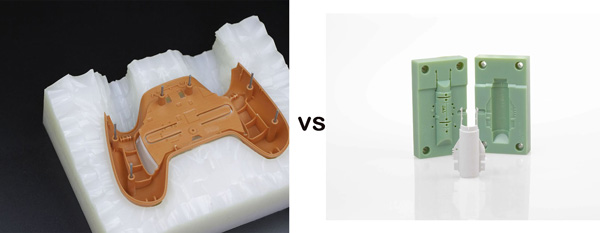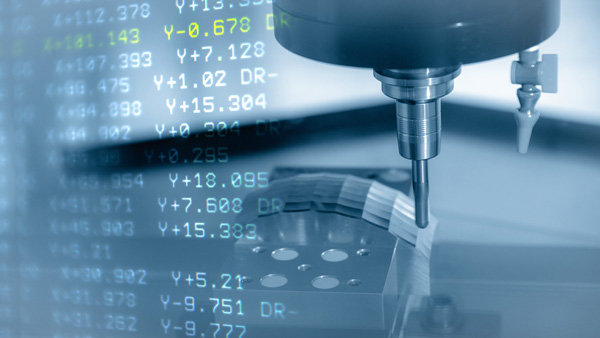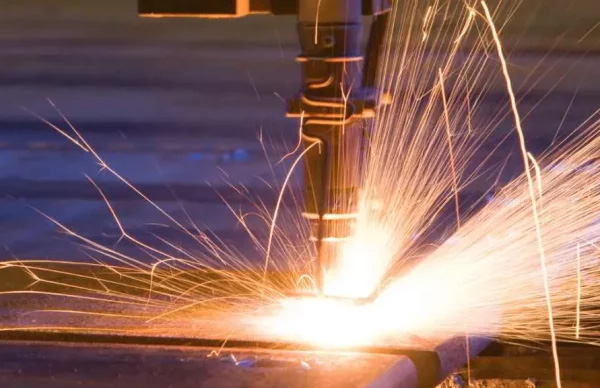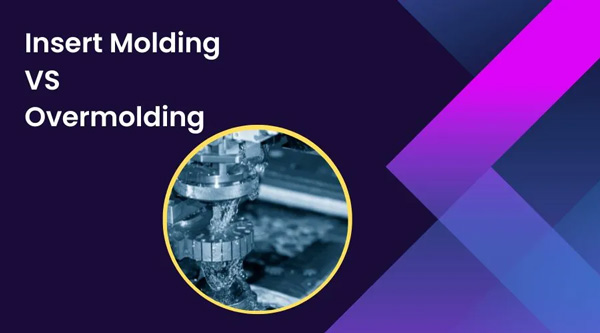Are you unsure which type of injection moulding is best suited for your product? Ok, there are various types of injection molding processes available, which can make you confused.
But you don’t have to worry. In this blog, you will analyse what injection molding is, its types, its working, and applications, and many more, so you can easily select which one is best for your needs. So, keep reading!

1) What is Injection Molding?
“Injection molding is a production method where parts are manufactured by injecting hot liquid materials into molds.”
Actually, injection molding is one of the common methods of manufacturing a part by pouring melted material into a mold of the desired shape. However, this method is well known for the formulation of parts of rubber, metal, still some other materials can be processed in this way.
Moreover, the injection molding technique is used in everyday objects such as drinking bottle caps, toys, and auto parts.
Alright! The process begins with heating raw plastics (often in pellet form) to a molten state, then they are injected into molds with the use of high-pressure pumps. Next, they are cold and hardened, and then the molds are opened to release the finished part. Surprisingly, this whole process completes instantly.
Why Is Injection Molding So Widely Used?
Are you wondering why this technique is so widely used, right? Well, there are many good reasons for it:
- Fast Production Cycles: Most importantly, after the initial mold is created, scaling production to thousands of parts requires minimal time.
- Precision and Accuracy: Well, the manufactured parts are identical in shape to each other and retain their dimensions accurately.
- Efficiency: Injection Molding is an efficient process because it minimizes waste. Additionally, the whole process can be automated.
- Material Selection Flexibility: Significantly, different types of materials, including soft or rigid plastics, can be employed.
2) What Are the Benefits of Using Injection Molding?
Now, we will discuss some benefits of using molding:
+ High Production Speed: Perhaps one of the most noticeable benefits offered by injection molding technology is faster production cycles. After design finalization, seamless scaling is possible along with molds that speed up the production further.
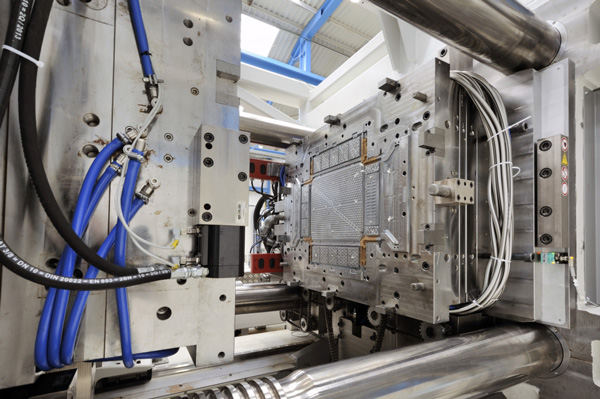
+ Consistent Quality and Accuracy: Significantly, Injection molding ensures every part manufactured is identical and uniform, both in shape and size. Hence, this means you can expect consistent quality and accuracy across all products.
+ Low Waste and Cost Efficiency: Well, Injection molding produces low waste as compared to other processes, which reduces costs significantly. Also, leftover materials are usually reusable.
+ Supports Complex Designs: Another important benefit of injection molding is that it supports complex designs. Thus, you can add fine lines, holes, and textures, etc, easily.
+ Wide Material Choice: There’s an extensive range of materials that can be utilised, including strong plastics or soft rubbers, heat-resistant or flexible materials.
Terry Su (having 10 years of experience in machine parts manufacturing) shared his reviews in a Quora post in reply to the given question, “What do I need to know about injection molding?” He replied that there are various factors to consider when you want to know about injection molding. He also mentioned that large-scale production is a main benefit of injection molding.

3) 8 Types of Injection Molding Technologies: Find the Best One for You
There are different types of injection molding techniques. Let’s talk about them thoroughly so that you may know which one is best for you:
i) Thermoplastic Injection Molding
As the name suggests, the process of thermoplastic injection molding allows heating plastic to high temperatures where it is then melted, and subsequently cooled and solidified within a mold.
However, its versatility makes this method perfect for different industries. The use of molds results in accurate, detailed shapes and the production of uniform parts.
Materials Used
- ABS (Acrylonitrile Butadiene Styrene)
- PVC (Polyvinyl Chloride)
- Polypropylene
Advantages
- Fast production cycles
- Excellent surface finish
- High repeatability and consistency
- Recyclable materials
- Reduced waste generation
- Complex geometries possible
ii) Thermoset Injection Molding
Thermoset injection molding applies heat and pressure to special types of plastic to create components that permanently set. However, these components are ideal for applications where the product must maintain structural integrity during extreme conditions.
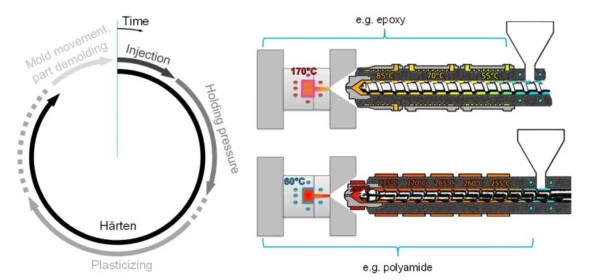
Materials Used
- Epoxy resins
- Melamine-formaldehyde
- Phenolic compounds
Advantages
- Exceptional resistance to heat
- Strong mechanical performance
- Great long-term durability
- Excellent electrical insulator
- Perfect for high-temperature environments
iii) Insert Molding
Another type is insert molding, where plastic is injected into a mold containing a pre-formed metal part. The plastic then flows around the metal part and takes the desired shape. Finally, after solidification, it is removed.
Materials Used
- Plastics such as nylon, ABS, and polycarbonate are Thermoplastics
- Metal inserts like brass, steel, or aluminium.
Advantages
- A tight bond between the insert and molded plastic
- Improved productivity by shortening assembly time
- Increases the durability of the finished product
- Enables incorporation of electrical or threaded elements.
- Simplified design and efficient production processes
iv) Overmolding
Overmolding is a process in which one material is molded over another to produce a single multi-material part. However, it is common for processes that need to improve comfort and appearance.
Materials Used
- Plastics like Nylon or ABS
- Elastomers, e.g., TPE, TPU
- Base materials: Metal or plastic
Advantages
- Products are more comfortable to use due to their user-friendly features.
- Part durability and shock absorption performance are greatly improved.
v) Gas-Assisted Injection Molding
In the gas-assisted injection molding technique, gas, commonly nitrogen, is introduced during the injection molding process to help fill the mold and form hollow sections. However, this technique makes it possible to minimise part weight, increase surface quality, and reduce warping on thick and complex designs.
Materials Used
- ABS
- Polycarbonate
- Nylon
- Polypropylene
Advantages
- Reduces sink marks in thick sections
- Improves surface finish and consistency
- Great for large or complex parts
- Decreases material usage and cost
vi) Micro Injection Molding
The next type is Micro injection molding, which involves the creation of super small and accurate plastic components. However, it is perfect for use in the medical field, electronics, and other industries that value tight tolerances and miniaturisation.
Materials Used
- PEEK (Polyether Ether Ketone)
- LCP (Liquid Crystal Polymer)
- Polycarbonate
- Polypropylene
Advantages
- Great accuracy with consistent results over time
- Supports tiny, complex, detailed components
- Cater to advanced industry standards for materials
vii) Liquid Silicone Rubber (LSR) Molding
LSR molding is the process of injecting liquid silicone into molds to produce soft, flexible, and durable parts. However, the products that require surface friendliness, durability, and are heat resistant benefit most from LSR molding.
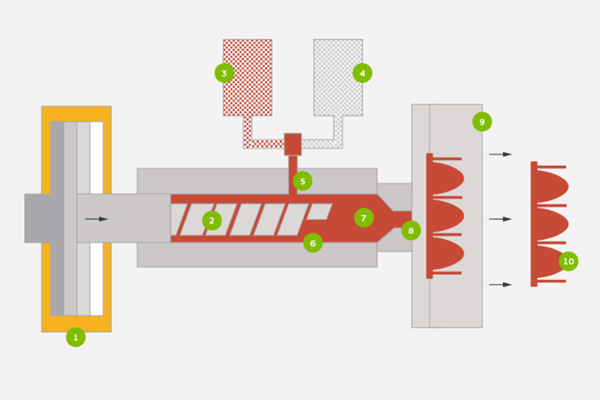
Materials Used
- Liquid Silicone Rubber of medical grade or industrial grade.
Advantages
- They are soft, flexible, and safe for skin contact.
- High and low temperature resistant.
- Superior Chemical, moisture resistance.
- Appropriate for complex and intricate shapes.
- Biocompatible. Non-toxic.
viii) Reaction Injection Molding (RIM)
Reaction Injection Molding (RIM) is an advanced technology that involves the reaction and injection of two separate liquid components. So, when these mixtures undergo a chemical reaction, they produce either a foam or solid plastic. Well, it is most efficient for making large, complex, durable, and lightweight parts.
Materials Used
- Polyurethane
- Polyurea
- Epoxy-based systems
Advantages
- Produces strong yet lightweight parts
- Excellent dimensional stability
- Suitable for large and intricate designs
- Lower mold pressure required
- Ideal for automotive and structural components
4) How Does Injection Molding Work?
A question can arise in your mind: How does injection molding work, right? Well, like many other technical procedures, injection molding may seem advanced, but it is simple. Let’s talk about the work of injection molding:
Step 1: Preparing the Material
Plastic pellets are the starting point of this process. These pellets are supplied into a hopper that transfers them into a heated barrel. Then, a rotating screw will progress these pellets along the barrel while simultaneously melting them into liquid plastic due to heat.
Step 2: Filling the Mold
When the pellets are transformed into liquid form, injection is the very next step. The machine now forces pressurised liquid plastic through pipes into a mold of the desired shape of your parts.
Step 3: Cooling the Part
Cooling is the most important step in the molding process. This step ensures that the form maintains its intended shape. The time it takes for cooling can vary from a few seconds to longer, depending on the size and type of material used.
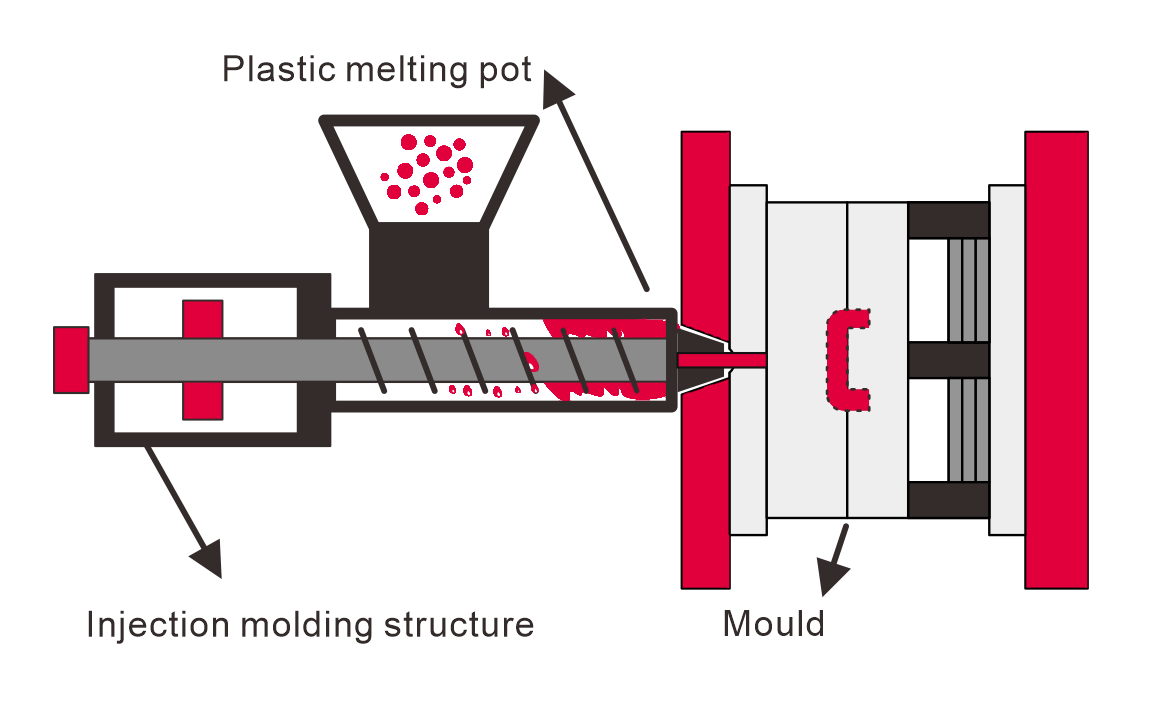
Step 4: Ejecting the Product
The product is ready for ejection after both cooling and removal from the mold. You will find that sprue parts are removed using pin ejectors easily. After this procedure, you can start inspection or trimming (if required).
Step 5: Repeat the Cycle
Well, Injection molds are suitable for mass production because once one pourable substance component is ejected, they instantly remix more of it into gel form, close the injection opening, and prepare to eject again.
5) Applications of Injection Molding
To be honest, Injection molding is a process that has nearly infinite applications out there. Now, we will discuss some of the applications of injection molding. Let’s start!
- Everyday Products Around You
You know, Kitchen gadgets, food boxes, and even combs, as well as caps of drinks, are all everyday products that are manufactured through injection molding. However, this type of production ensures uniformity and durability for these products.
- Automotive Industry
Well, Bumpers, dashboards, door panels, and light housing all require special attention since they need to be made out of durable yet lightweight material. Thus, injection molding serves this purpose within automobiles.
- Medical and Healthcare
Another important application of injection molding is in the parts and device components, sample containers, syringes, and pill dispensers are all medical items. These parts can be produced on a large scale while ensuring cleanliness.
- Electronics and Gadgets
Well, the internal plastic components of electronics like remote controls or cell phones, their outer shells are also prepared by injection Molding.
So, how many types of injection molding are there? Well, there are multiple types of injection molding, and all are suitable for your needs.
6) Classification of Injection Molding Machines and Molds
Alright! To understand the types of injection molding, you must look at the machines and molds used in the process. Each project has its specific requirements, and using the right set of tools makes a difference in terms of efficiency, precision, quality, and cost.
Different Types of Injection Moulding Machines
i) Hydraulic Injection Molding Machines
These are the oldest and most commonly used forms in industries worldwide. However, it is ideal for Large parts production as well as high-pressure applications. Moreover, it is beneficial because of its Powerful, consistent efficiency, affordability, and dependability.
But, it is limited because of Higher energy consumption than newer models.
ii) Electric Injection Molding Machines
The electric injection molding machines are faster and more efficient. However, these are perfect for more explicit uses like high-precision tasks or cleanroom production.
Moreover, it is beneficial because of such features, including Quieter, energy saving, as well as cleaner operational systems. But, it is limited due to its Higher initial cost.
iii) Hybrid Injection Molding Machines
A mix of both hydraulic and electric, providing the best advantages from both ends. However, it is Best for achieving balanced performance. In addition, it is more efficient and powerful than hydraulic solutions alone. It is limited because maintenance may be more complicated.
So, if you say, what types of injection molding machines are used to force the material into the mold? Well, it depends on the size of your part, its material, and how precise it needs to be.
Different Types of Injection Molds
Now let’s go on to molds. To achieve different production goals, there are many types of injection molds suitable for the desired components.
i) Two-Plate Molds
They are Cost-effective and simple to use. Thus, they are Ideal for basic parts shapes. And, its structure has a single parting line for easy removal of the part from the mold.
ii) Three-Plate Molds
Significantly, the three-part molds are used more flexibly, allowing the creation of complex components. However, it is Ideal for Parts with undercuts or multiple gates.
iii) Cold Runner Molds
In cold runner molds, plastic cools down in each cycle, simplifying processes. However, it is best suited for Simple projects with tight budgets. The main advantage of cold runner molds is that they lower maintenance costs.
iv) Family Molds
They are used to produce several parts simultaneously in one cycle. It is best suited for different shapes produced together.
7) Get Injection Molding Services for Your Next Project
Alright! If bringing your product idea into reality is your goal, looking for a reliable injection molding service becomes your first step. Well, the good news is you don’t need to go too far. Koonze Model ensures that every step is executed simply, quickly, and dependably from beginning to end.
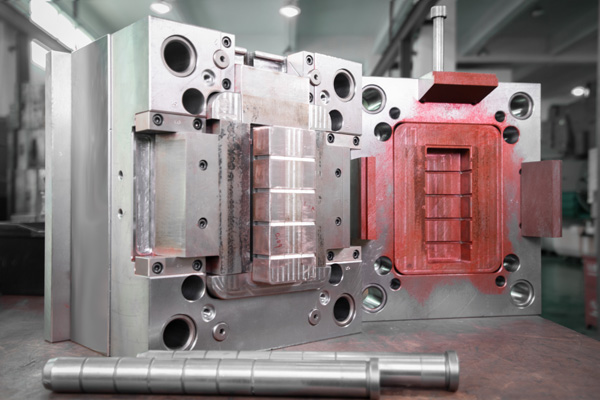
- Why Choose the Koonze Model?
Koonze Model has a good reputation because we offer injection molding services across all levels, including prototyping to mass production. With years of industry experience and advanced equipment, Koonze is prepared to work with almost any industry, providing customised solutions.
Moreover, to meet the needs of different clients, Koonze utilises various injection molding machines, like hybrids and electric ones. These machines have a great speed-to-energy consumption ratio while retaining their capability for precision engineering.
However, Koonze is ready for your every design, whether it is simple or complex.
- Full-Service Support at Every Step
At Koonze, the support does not end with injection molding; rather, it extends well past it. Our team can guide you in material selection, type of injection mold design choice, and overall part configuration, making them the one-stop shop for all guidance-related help.
Koonze offers material options like ABS, nylon, and PC, among many others. With this broad selection provided by Koonze, finding what fits best for your use case, whether it be flexibility or heat resistance, becomes easier.
- Simple Start, Fast Turnaround
To be honest, starting with Koonze is pretty straightforward, as all you have to do is send in your 3D design. We evaluate it, recommend modifications if needed, and provide an estimate. So, after approval, production starts immediately.
8) Final Thoughts
Hence, it is concluded from the above discussion that injection molding remains one of the most prominent methods of modern manufacturing. With a vast selection of injection molding processes, machines, and molds available, you can select according to your needs.
However, multiple advantages range from enhanced product durability to faster production times. Are you ready to choose the Koonze model for your next project? The Koonze Model offers comprehensive assistance alongside advanced technology and fast delivery. You can contact us right now!


